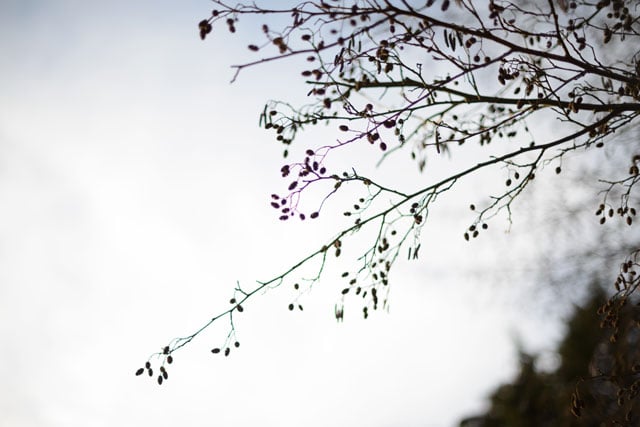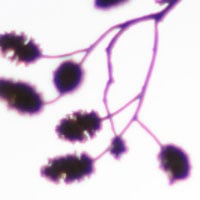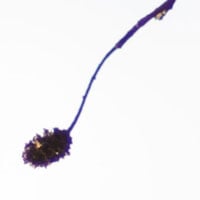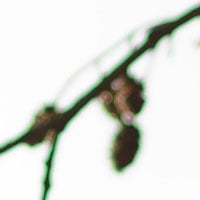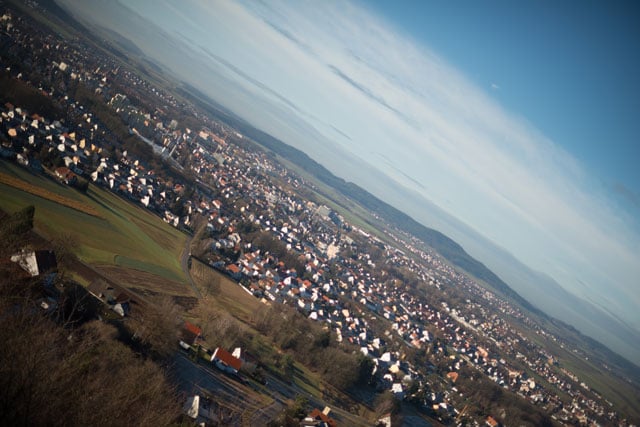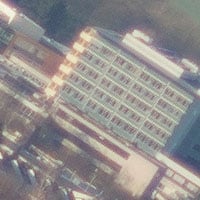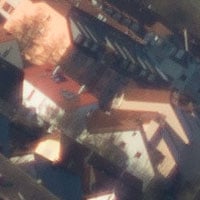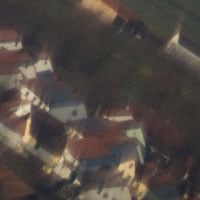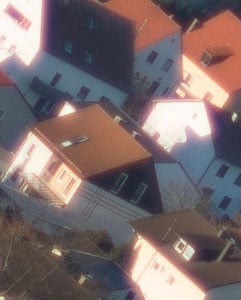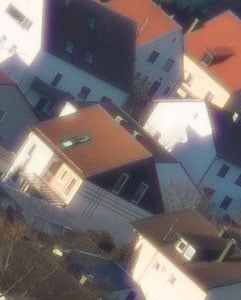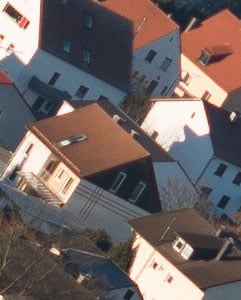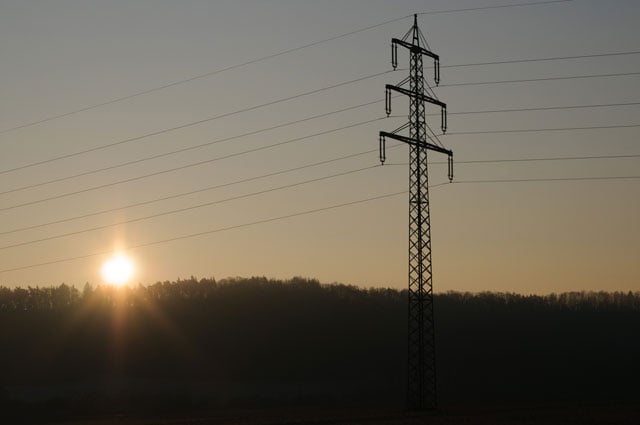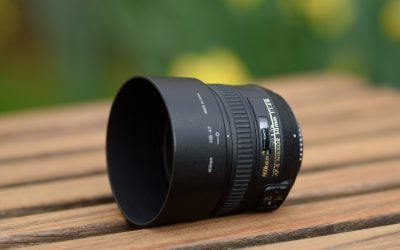Nikon 50mm f1.4G review
-
-
Written by Thomas
Quality
Longitudinal Chromatic Aberration and focus shift
With lenses offering an aperture of f2.8 or larger I test for longitudinal CA (loCA, a.k.a. “axial color” or “bokeh CA”). The Nikon shows a clear magenta coloration in the foreground (left) and less obtrusive greenish hues in the background (right). By f5.6 the effect is gone.
Nikon 50mm f1.4G Longitudinal Chromatic Aberration (loCA) |
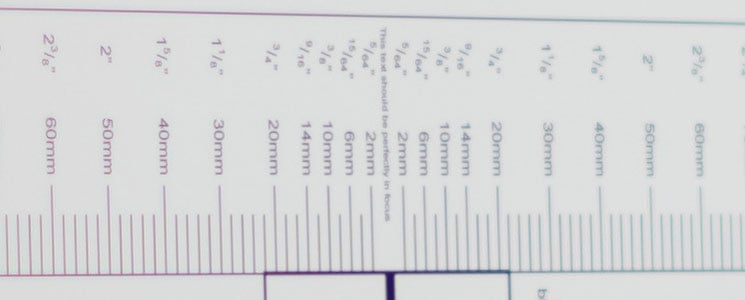 |
| 100% crop, 50mm, f1.4, shot from 1.8m, left = foreground, right = background |
This also shows up in real-life shots especially under high-contrast conditions (specular highlights like sun on water or other reflecting surfaces or trees against the sky) and gets more pronounced the closer the distance. Unfortunately it is not easily corrected in post-processing, unlike lateral CAs. The coloration can be so strong that you can immediately recognize it even in a thumbnail of an image. See the following crass example shot from around 1.3m.
At f2.8 the effect can still clearly be seen (longitudinal CA at f2.8).
For an example of loCA on specular highlights have a look a the sample image of the creek on the next page.
Sharpness and contrast
Let’s have a look at the theoretical performance (MTF-charts) compared to the Sigma 50/1.4 first:
Nikon AF-S 50mm f/1.4G versus Sigma 50mm f/1.4 EX DG HSM MTF | ||
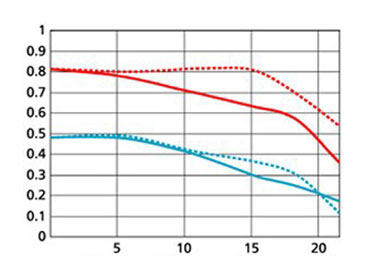 | 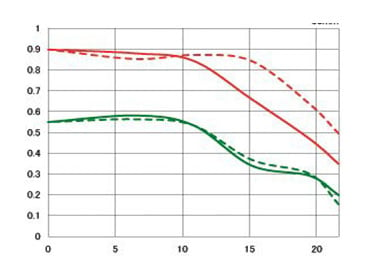 | |
| Nikon 50mm at f1.4 | Sigma 50mm at f1.4 | |
These charts show the lens-performance at the largest aperture f1.4. Higher values are better and the closer the dotted and the continuous lines of each color are together the less astigmatism (= resolution depends on the orientation of the test-pattern) the lens has. The x-axis displays the distance from the optical axis (=center of the sensor) in mm. I’ll show you the real-life performance at 4 mm (center), 13 mm (DX-corner), and 20 mm (FX-corner) on a D800.
From the charts the new lens should perform a little less contrasty and sharp than the Sigma. The MTF-curves slope pretty gentle until the last few millimeters of the image circle which indicates a pretty even performance across the frame except for the FX-corner. Looking at these charts you should always keep in mind that these are recorded at f1.4 – an aperture that is very large. Let’s see how this theoretical performance translates into real life results in the sharpness test based on Siemens-stars – and how the performance increases when you stop this lens down.
What follows are near-center results (first column) followed by DX-corner results and FX-corner results on a D800. The D800 results from the DX-corner should be a very good approximation for performance on a 16MP DX sensor (like the D7000), because the pixel-pitch of both sensors are the same. But differences in the AA-filter and micro-lens-design of a D800 and a D7000 might yield different end-results.
Processing was done in Lightroom 5.3 from RAW at camera standard settings. Noise-reduction is set to 0, sharpening to 70/0.5/36/10, with no extra tone, color, or saturation-adjustment. White-balance was adjusted to a neutral white and I did some exposure compensation to make the brightness match. Removal of lateral CA is ON. Focus was optimized for center, DX-corner and FX-corner respectively at f1.4 and not changed when stopping down.
The following are all 100% crops!
Nikon 50mm f1.4G with Nikon D800 100% crop from center | Nikon 50mm f1.4G with Nikon D800 100% crop from DX-corner | Nikon 50mm f1.4G with Nikon D800 100% crop from FX-corner | ||
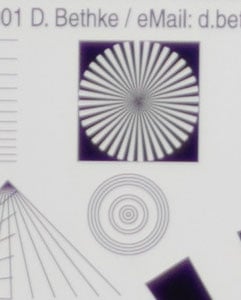 | 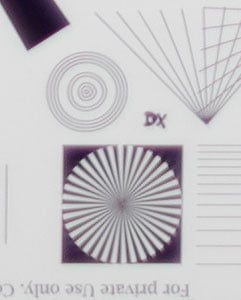 | 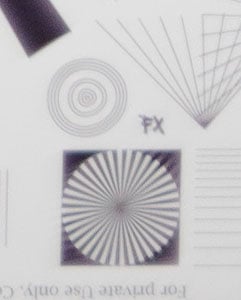 | ||
50mm, f1.4, 100 ISO | 50mm, f1.4, 100 ISO | 50mm, f1.4, 100 ISO | ||
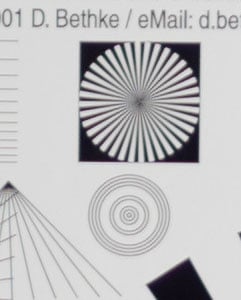 | 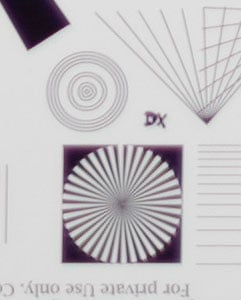 | 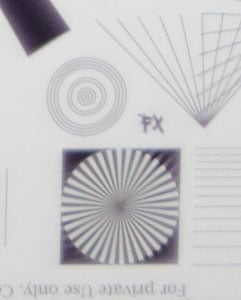 | ||
50mm, f2.0, 100 ISO | 50mm, f2.0, 100 ISO | 50mm, f2.0, 100 ISO | ||
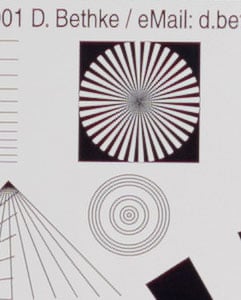 | 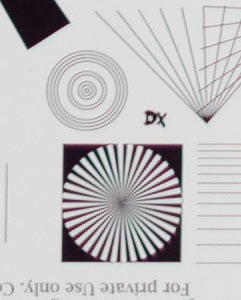 | 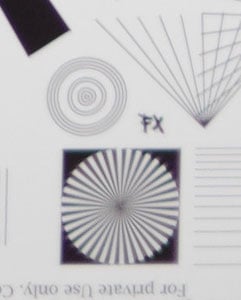 | ||
50mm, f2.8, 100 ISO | 50mm, f2.8, 100 ISO | 50mm, f2.8, 100 ISO | ||
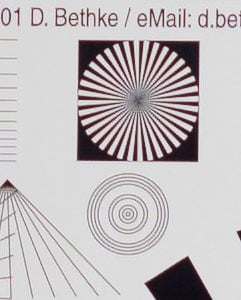 | 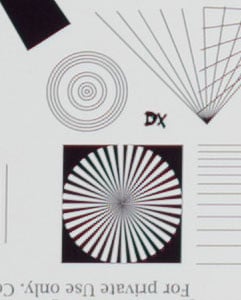 | 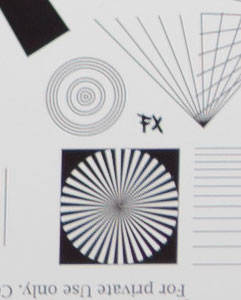 | ||
50mm, f4.0, 100 ISO | 50mm, f4.0, 100 ISO | 50mm, f4.0, 100 ISO | ||
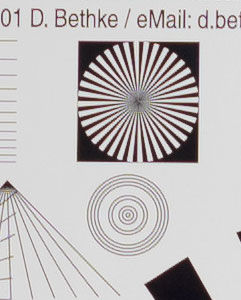 |  | 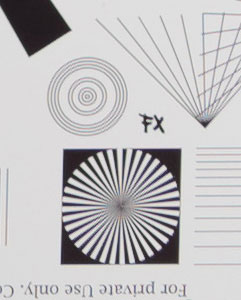 | ||
50mm, f5.6, 100 ISO | 50mm, f5.6, 100 ISO | 50mm, f5.6, 100 ISO | ||
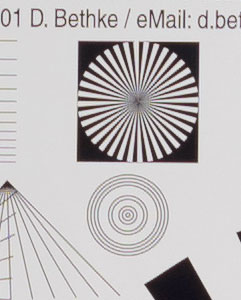 | 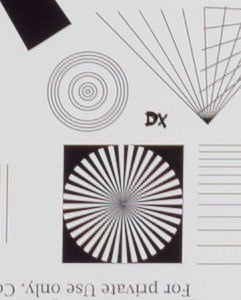 | 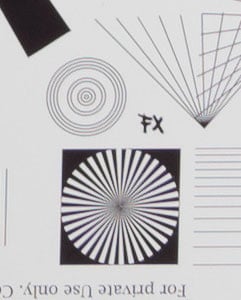 | ||
50mm, f8.0, 100 ISO | 50mm, f8.0, 100 ISO | 50mm, f8.0, 100 ISO | ||
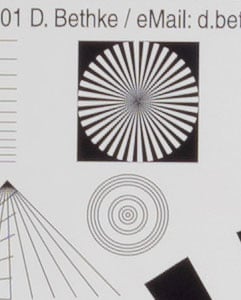 | 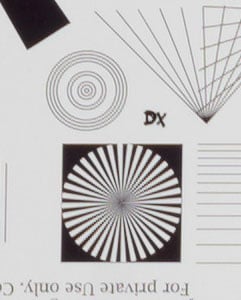 | 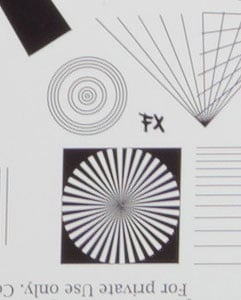 | ||
50mm, f11, 100 ISO | 50mm, f11, 100 ISO | 50mm, f11, 100 ISO |
These 100% crops from a 36MP D800 sensor demonstrate the virtues of this lens. Even wide open you can achieve some very respectable resolution albeit at the cost of a low(er) contrast which produces a “soft” rendering which even might be preferred for portraiture. The FX-corner also shows clear signs of coma. Stopping down improves the performance nicely but the DX-corner show some loCA effect and the coma in the FX-corner is only really under control at f4.0. At f5.6 the lens shows a very good performance across the border and all aberrations are very well controlled. Diffraction is setting in at f11 albeit only slightly. So you can easily shoot your landscape shots with this lens at f11 and not worry about much softening. There are some slight distortions outside the DX-frame. And the lens clearly has relevant field-curvature wide open: I had to adjust focus slightly for the center, the DX-corner and the FX-corner. So for the reproduction of flat subjects you better step down to f5.6.
Keep in mind that these are 100% crops from a 36MP sensor and that we’re doing serious pixel-peeping. The probability that the far corners of a real-life subject are still in the plane of sharpest focus (or even relevant for the image) are pretty slim.
Following is a direct comparison to the Sigma 50mm f1.4 EX DG HSM at f1.4:
Sigma 50mm f/1.4 with Nikon D800 100% crop from center | Sigma 50mm f/1.4 with Nikon D800 100% crop from DX-corner | Sigma 50mm f/1.4 with Nikon D800 100% crop from FX-corner | ||
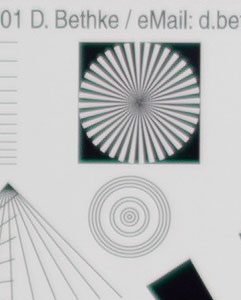 | 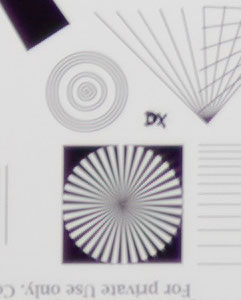 | 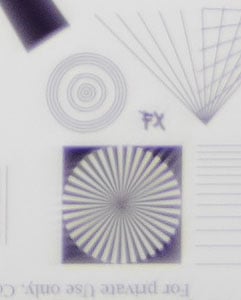 | ||
50mm, f1.4, 100 ISO | 50mm, f1.4, 100 ISO | 50mm, f1.4, 100 ISO |
Nikon 50mm f1.4G with Nikon D800 100% crop from center | Nikon 50mm f1.4G with Nikon D800 100% crop from DX-corner | Nikon 50mm f1.4G with Nikon D800 100% crop from FX-corner | ||
 |  |  | ||
50mm, f1.4, 100 ISO | 50mm, f1.4, 100 ISO | 50mm, f1.4, 100 ISO | ||
As you can see, both f1.4 lenses show a similar performance here with a slight advantage for the Nikon in the corners and for the Sigma in the center.
Now here’s how it compares to the flagship Nikkor 58mm f1.4G.
Nikon 50mm f1.4G with Nikon D800 100% crop from center | Nikon 50mm f1.4G with Nikon D800 100% crop from DX-corner | Nikon 50mm f1.4G with Nikon D800 100% crop from FX-corner | ||
 |  |  | ||
50mm, f1.4, 100 ISO | 50mm, f1.4, 100 ISO | 50mm, f1.4, 100 ISO | ||
Nikon 58mm f1.4G with Nikon D800 100% crop from center | Nikon 58mm f1.4G with Nikon D800 100% crop from DX-corner | Nikon 58mm f1.4G with Nikon D800 100% crop from FX-corner | ||
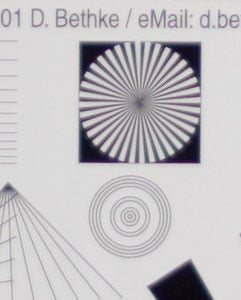 | 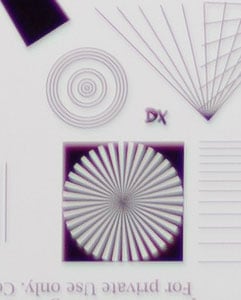 | 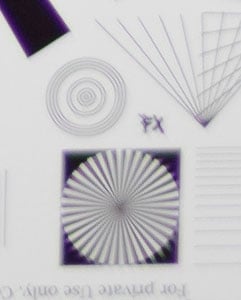 | ||
50mm, f1.4, 100 ISO | 50mm, f1.4, 100 ISO | 50mm, f1.4, 100 ISO | ||
Performance at large distances
The Siemens-star test-targets are shot at a distance of 40x focal length (i.e. at 2.2m). But performance of lenses also depends on the shooting distance. Therefore I do another series of test-shots of a landscape dubbed the “Unremarkables” where you can measure distances in km, not meter. I use this scene to show you how the lenses perform when almost everything is at infinity. There’s no tinkering with vignette-control so you see it here as it is produced by the lens. Focus was manually acquired at the largest aperture in live-view and not changed for other apertures.
You can click on the image to access the large original. Please respect our copyright and only use those images for personal use.
The main image shows the complete scene at f1.4 to give you an impression of the angle of view and to judge vignetting. This is followed by one row of 100% crops at f1.4, f2.8, and f5.6 each from the middle, the DX-corner and the right FX-corner.
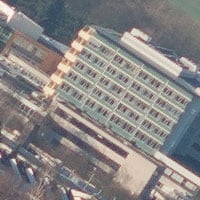 | 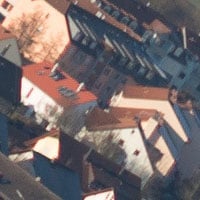 | 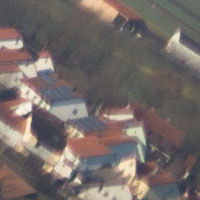 | ||
f2.8, 100 ISO, center | f2.8, 100 ISO, DX-corner | f2.8, 100 ISO, FX-corner | ||
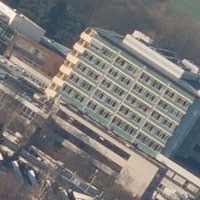 | 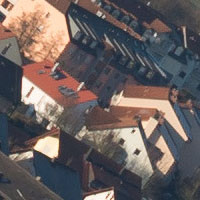 | 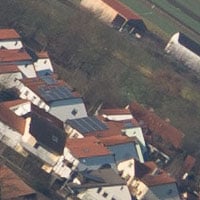 | ||
f5.6, 100 ISO, center | f5.6, 100 ISO, DX-corner | f5.6, 100 ISO, FX-corner | ||
Performance is pretty impressive even wide open just right into the FX-corner – albeit with some hefty vignetting. Stopping down to f2.8 brings center sharpness and contrast to a very good level and reduces vignetting considerably. But the DX-corner does not really get up to the same level of performance. The FX-corner (again) is pretty good. At f5.6 you get very good sharpness across the frame.
The glaring sun and resulting extremely high contrast of the scene reveals again longitudinal CA: See the left crop below from the exact same scene (below the center) shot at f1.4. This is pretty ugly and results from the need to use a bit of back-focus to get the highest resolution. If you focus a bit closer you can drastically reduce the magenta fringing but at the cost of visibly lower resolution. You can also try to reduce the magenta fringing in post-processing but that is not easy and will still leave a halo around high-contrast borders as you can see in the middle crop of the following table. If you really want sharp and loCA-free images in high-contrast situations you better stop down to f4.0 (see right crop).
Shoot the same scene at an overcast day the contrast is much lower and you would not see any magenta fringing even at f1.4. And if you want to see the “Unremarkables” at night, head over to the next page with sample images.
All-in-all the lens shows quite an impressive performance near and far even on the very critical 36MP sensor of a D800. Wide open the contrast is quite low, but the image reveals a lot of details that can be pulled out through an increased contrast in post-processing. In high contrast scenes watch our for loCA (especially magenta fringing) and the corners are prone to show coma. Stopping down increases image quality nicely. Just keep in mind that the lens needs to be stopped down to f4.0 or f5.6 to deliver crisp images of very good quality all across the frame of a high resolution full-frame body.
Rendering of out-of-focus subjects
This test is for the rendering of point-light sources in the background. The circle of confusion that is produced by this test is pretty indicative of Bokeh performance (in the background) and light fall-off. Ideally the out-of-focus image of the point-light is evenly lit and perfectly circular, with no “onion-rings”, and without coloration. Large aperture lenses normally produce an effect known as “cat’s eye” the further away from the optical axis the point-light is projected. This is due to optical vignetting in the lens barrel when light enters the lens from an angle. For an explanation of this effect have a look over at toothwalker.org.
Nikon 50mm f1.4G with Nikon D800 50% crop from center | Nikon 50mm f1.4G with Nikon D800 50% crop from DX-corner | Nikon 50mm f1.4G with Nikon D800 50% crop from FX-corner | ||
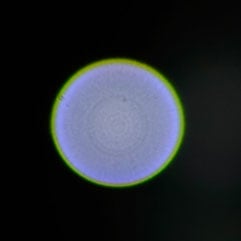 | 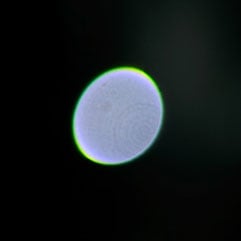 | 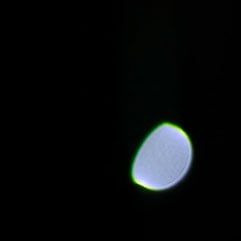 | ||
50mm, f1.4, 100 ISO | 50mm, f1.4, 100 ISO | 50mm, f1.4, 100 ISO |
The Nikon 50/1.4G produces a circle of confusion that is around 20% smaller in the center than from Nikon’s 58/1.4G. It has a strong green outlining due to loCA and the light-distribution that is pretty even in the center-circles develops stronger highlights at the outline the further you look away from the optical axis. The circle of confusion shrinks in diameter pretty fast towards the borders/corners of the sensor (in line with vignetting) although the lens shows only a mild cat’s-eye effect. This does not bode well for high Bokeh quality: I’d expect some nervousness that increases the further away from the optical axis you look. There is also some clipping of the circles on the bottom of the image that probably comes from the mirror-box of the D800 body. You don’t see it in the above samples because in the FX-corner the circle of confusion is already so small that it evades clipping. The clipping is gone by f2.8 and by f5.6 the cat’s-eye effect is completely gone in the FX-corner. Onion-rings are almost non-existing. For real-live Bokeh performance head over to the next page.
Shooting in contra-light, flare, glare, and ghosting
Shooting normal or wide-angle lenses always runs the risk of catching a strong light-source like the sun shining directly into the lens. This could produce strange colorful ghosts-images or reduce contrast considerably through flare and glare.
The appearance of flare and ghosting depends on factors like the aperture and the angle of the light hitting the lens. So to judge the proclivity of a lens for these artifacts I went through a series of well calculated shots against a strong light source to provoke glare and ghosting.
| Flare/Glare: shot with Nikon 50mm f/1.4G at f8 on a D800 |
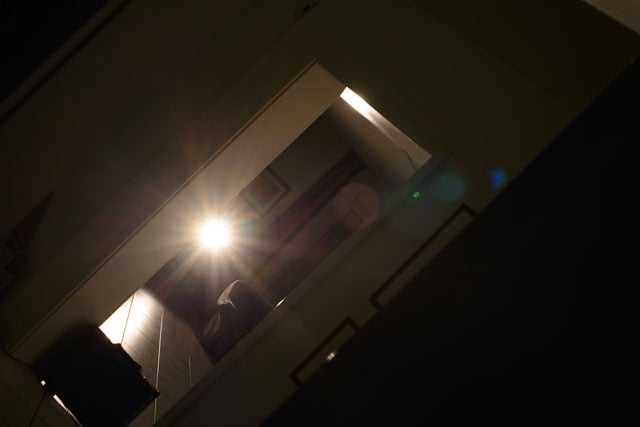 |
| 50mm, f8, 100 ISO |
The image shows one of the worst flares and ghosts that I could produce with this lens – that’s not too bad. Of 14 shots under similar conditions 7 showed weaker flare/ghosts and the rest was practically clean. There’s little veiling glare in these images and the blacks are pretty deep. See another shot on a D300:
| Sunset: shot with Nikon 50mm f/1.4G at f8 on a D300 |
| 50mm, f8, 1/2000 sec, 200 ISO |
This shot was taken at f8 shooting directly into the Sun, and as always I’d warn you’re doing this is at your own risk. The important thing to notice in this shot is there’s no obvious flare or ghosting.
Finally my contrast-deterioration-test which shows whether closing the aperture in strong contra light reduces contrast. Normally you would expect a lens to show more contrast when stopped down but some lenses fail miserably because the strong light reflected from the closing aperture inside the lens generates some serious amount of glare. I set up strong contra-lighting using two halogen-spots shining directly into the lens. What you see below is the result with the aperture wide open at f1.4, then closed to f4 and finally at f8.
The AF-S 50mm f1.4G passes this test quite well. But even then, looking at the black under the lens-shade you can see it becoming progressively more gray-ish when the lens is stopped down. But the effect is pretty tame and would be no reason for me to criticize this lens. It is far more a testament of how contrasty this lens can be even under adverse conditions wide open.
| Contrast test: Nikkor AF-S 50mm f/1.4G on a D300 |
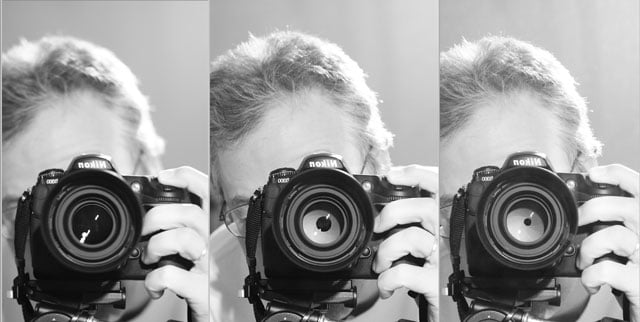 |
| 50mm at (from left to right) f1.4, f4.0 and f8.0, 200 ISO |
Now let’s check out some Nikon 50mm f1.4 sample images, or if you’ve seen enough, head over to my verdict.
